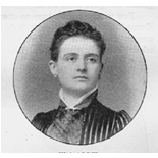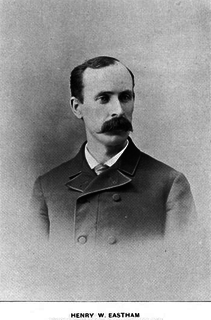Related Research Articles

The old Chain of Rocks Bridge spans the Mississippi River on the north edge of St. Louis, Missouri. The eastern end of the bridge is on Chouteau Island, while the western end is on the Missouri shoreline. Its most notable feature is a 22-degree bend occurring at the middle of the crossing.
Illinois Route 3 (IL 3) is a 187.44-mile-long (301.66 km) major north–south arterial state highway in southwestern Illinois. It has its southern terminus at Cairo Junction at the intersection of U.S. Route 51 (US 51) and Illinois Route 37 (IL 37), and its northern terminus in Grafton at IL 100.

The New Chain of Rocks Bridge is a pair of bridges across the Mississippi River on the north edge of St. Louis, Missouri. It was constructed in 1966 to bypass the Chain of Rocks Bridge immediately to the south. It originally carried traffic for Bypass US 66 and currently carries traffic for Interstate 270. The bridge opened to traffic on September 2, 1966.

Bird Sim Coler was an American politician.

The Ulster Junior Cup is a rugby union competition for clubs in the Irish province of Ulster that are not considered strong enough to play in the Ulster Senior Cup. It also includes the second teams of the senior clubs. The perpetual trophy that is awarded to the winners is called The Balmoral Cup

The Ulster Towns Cup is a rugby union competition organized by the Ulster branch of the Irish Rugby Football Union.
Doris and Bethel are twin town sites in Buchanan County, Iowa, United States, both located just north of Highway 939 in central Buchanan County near Independence. Founded as whistle-stops along the Chicago and North Western Railway, the sites are abandoned today.
The Ulster Senior Schoolgirls' Cup is an annual competition competed for by schools affiliated to the Ulster Hockey Association, a branch of the Irish Hockey Association. The competition has been in existence since 1907 and is currently sponsored by the Belfast Telegraph.

Yda Hillis Addis, was the first American writer to translate ancient Mexican oral stories and histories into English, some of which she submitted to The Argonaut. The most widely popular of her more than 100 stories are Roman's Romance and Roger's Luck.
The Kirk Cup is the oldest hockey tournament in Ulster and the oldest provincial hockey trophy in Ireland. It has become a tradition since the 1966-67 season for the final to be played on Boxing Day, a date previously reserved for the Anderson Cup Final. The final attracts the largest crowd of the Ulster hockey season. The cup is named after its donor, Mr. John Kirk, J.P, who was a member of the Antrim club. Following the creation of the Irish Hockey League, the competition remained open only to Ulster Senior League members, until 2018-19, when Irish Hockey League teams from Ulster were admitted.

The Ulster Shield is the premier knock-out competition for ladies' hockey teams in the Ulster province of Ireland. It is one of the oldest ladies' hockey competitions in the world, with the first competition being held in 1896. Ireland was the first country to form a national association when the Irish Ladies Hockey Union was formed in 1894.

The Paramount Television Network (PTN) was a venture by American film corporation Paramount Pictures to organize a television network in the late 1940s. The company built television stations KTLA in Los Angeles and WBKB in Chicago; it also invested $400,000 in the DuMont Television Network, which operated stations WABD in New York City, WTTG in Washington, D.C., and WDTV in Pittsburgh. Escalating disputes between Paramount and DuMont concerning breaches of contract, company control, and network competition erupted regularly between 1940 and 1956, and culminated in the dismantling of the DuMont Network. Television historian Timothy White called the clash between the two companies "one of the most unfortunate and dramatic episodes in the early history of the television industry."
The Ulster Senior League is a league competition for the first teams of men's hockey clubs affiliated to the Ulster Hockey Union of Hockey Ireland.
George Latimer was a Philadelphia merchant and member of the Pennsylvania House of Representatives. He served as speaker of the Pennsylvania House 1794–1798.

Henry W. Eastham was a Massachusetts businessman and politician who served as a member and President of the Common Council, and as the 30th Mayor of Lynn, Massachusetts.

Brothers John E. ("Jack") Biddle (1872–1902) and Edward C. ("Ed") Biddle (1876–1902) were condemned prisoners who escaped from the Allegheny County Jail in Pittsburgh, Pennsylvania using tools and weapons supplied to them by the warden's wife, Kate Soffel who fled with them. During the subsequent pursuit and capture all three were wounded, the brothers mortally.

The Norfolk Militia was formed under the Militia Act of 1757, replacing earlier less formal arrangements. From this date, better records were kept, and the men were selected by ballot to serve for longer periods. Proper uniforms and better weapons were provided, and the force was 'embodied' from time to time for training sessions.
Arthur Adalbert Chase was a British professional cyclist.
References
- ↑ Anaconda Standard (Butte, Montana). February 8, 1901. p. 5, col. 1.Missing or empty
|title=(help) - ↑ The Post-Standard (Syracuse, New York). February 11, 1901. p. 2, col. 2.Missing or empty
|title=(help) - ↑ Cedar Rapids Evening Gazette (Cedar Rapids, Iowa). January 17, 1901. p. 1, col. 5.Missing or empty
|title=(help) - ↑ Alton Evening Telegraph. February 3, 1951. p. 4, col. 2.Missing or empty
|title=(help) - ↑ Alton Evening Telegraph. January 21, 1901. p. 3, col. 5.Missing or empty
|title=(help) - ↑ Lyon County Reporter. Rock Rapids, Iowa). p. 6, col. 5.Missing or empty
|title=(help) - ↑ Sunday Morning Telegraph. Dubuque, Iowa). p. 1, col. 4.Missing or empty
|title=(help) - ↑ Alton Evening Telegraph. January 28, 1901. p. 3, col. 6.Missing or empty
|title=(help) - 1 2 Alton Evening Telegraph. February 6, 1901. p. 3, col. 5.Missing or empty
|title=(help) - ↑ Alton Weekly Telegraph. February 14, 1901. p. 2, col. 2.Missing or empty
|title=(help) - ↑ Davenport Sunday Leader (Davenport, Iowa). February 10, 1901. p. 1, col. 1.Missing or empty
|title=(help) - ↑ Alton Evening Telegraph. February 9, 1901. p. 3, col. 6.Missing or empty
|title=(help) - ↑ Daily Herald (Delphos, Ohio). February 12, 1901. p. 5, col. 3.Missing or empty
|title=(help) - ↑ Alton Weekly Telegraph. February 14, 1901. p. 11, col. 4.Missing or empty
|title=(help) - ↑ Alton Evening Telegraph. February 18, 1901. p. 3, col. 5.Missing or empty
|title=(help) - ↑ Alton Evening Telegraph. April 26, 1901. p. 7, col. 5.Missing or empty
|title=(help) - ↑ Alton Weekly Telegraph. January 30, 1902. p. 12, col. 4.Missing or empty
|title=(help) - ↑ Alton Evening Telegraph. March 20, 1902. p. 3, col. 4.Missing or empty
|title=(help) - ↑ Alton Evening Telegraph. June 24, 1902. p. 3, col. 5.Missing or empty
|title=(help) - ↑ Alton Evening Telegraph. June 26, 1902. p. 3, col. 5.Missing or empty
|title=(help) - ↑ Edwardsville Intelligencer. May 28, 1914. p. 8, col. 3.Missing or empty
|title=(help) - ↑ Alton Evening Telegraph. June 27, 1902. p. 3, col. 6.Missing or empty
|title=(help)